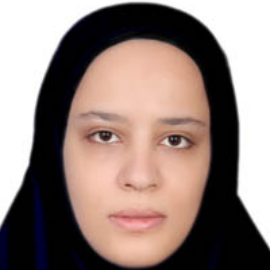International Journal of Information Technology and Computer Science (IJITCS)
IJITCS Vol. 6, No. 10, 8 Sep. 2014
Cover page and Table of Contents: PDF (size: 384KB)
A New Algorithm for Voting in Social Networks
Full Text (PDF, 384KB), PP.36-41
Views: 0 Downloads: 0
Author(s)
Index Terms
Social Network, Voting, Consensus
Abstract
Regarding to increasing spread of internet in recent years, social networks attracted the attention of many people. A voting system is a set of rules that a community adopts to take collective decision. In this paper we study representative democracy voting and introduce an algorithm for finding a committee who are participated in voting rather than entire social network. In this model we use community detection techniques in order to obtain parties, and D’Hondt rule to clarifying proportion of each party in committee. We finally use analysis links webpages algorithms for finding important users in social network.
Cite This Paper
Zeinab Saeidi Masine, "A New Algorithm for Voting in Social Networks", International Journal of Information Technology and Computer Science(IJITCS), vol.6, no.10, pp.36-41, 2014. DOI:10.5815/ijitcs.2014.10.05
Reference
[1]R. D. Putnam, Making Democracy Work: Civic Traditions in Modern Italy, Princeton: Princeton: Princeton University Press, 1993
[2]H. Yamakawa, M. Yoshida, and M. Tsuchiya. Toward delegated democracy: Vote by yourself, or trust your network. International Journal of Human and Social Sciences, 2007
[3]K. J. Arrow. Social Choice and Individual Valuse. John Wiley & Sons, 1951, 2nd ed, 1963.
[4]R. Dubes, A. Jain. Algorithms for Clustering Data. Prentice-Hall, Englewood Cliffs. 1988.
[5]P. Boldi , F. Bonchi , C. Castillo , S.Vigna . Viscous Democracy for social network. Communication of ACM, June 2011.
[6]B. Ford. Delegative democracy. http://www.bford.info/ deleg/deleg.pdf, May 2002
[7]D. Lusseau, K. Schneider, O. J. Boisseau, P. Haase, E. Slooten, and S. M. Dawson, The bottlenose dolphin community of Doubtful Sound features a large proportion of long-lasting associations, Behavioral Ecology and Sociobiology 54, 396-405 (2003).
[8]P. Boldi , F. Bonchi , C. Castillo , S.Vigna . Voting in social networks. CIKM, 2009.
[9]G. Jeh and J. Widom. Scaling personalized web search. In In Proceedi ngs of the Twelfth International World Wide Web Conference, pages 271–279. ACM Press, 2002.
[10]J. Donath, D. Boyd. Public displays of connection. BT Technology Journal 22, 4, 2004, 71–82
[11]R. S. Katz. Democracy and Elections . Oxford University Press, 1997
[12]N. Azizifard: Social Network Clustering, International Journal of Information Technology and Computer Science,2014,01.
[13]M .Newman, M. Girvan. Finding and evaluating community structure in networks. Journal of Physical Review 2004. 69(2): 026113.
[14]K. Steinhaeuser, N. Chawla. Identifying and evaluating community structure in complex networks. Journal of Pattern Recognition Letters. 2010.31(5): 413-421.
[15]L.Tang , H.Liu, Morgan, Claypool: Community Detection and Mining in Social Media, Morgan and Claypool September 2010
[16]Zachary WW. An information flow model for conflict and fission in small groups. Anthropological Research. 1977. 33(4): 452-473.H.
[17]D. Lusseau, K. Schneider, O. J. Boisseau, P. Haase, E. Slooten, and S. M. Dawson, The bottlenose dolphin community of Doubtful Sound features a large proportion of long-lasting associations, Behavioral Ecology and Sociobiology 54, 396-405 (2003).
